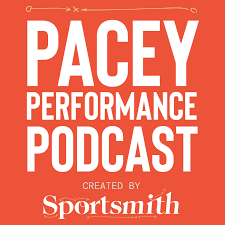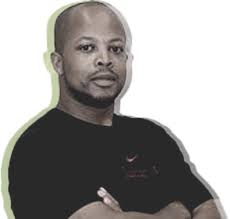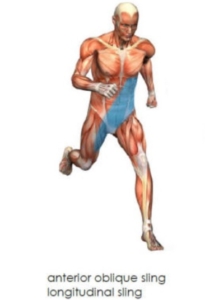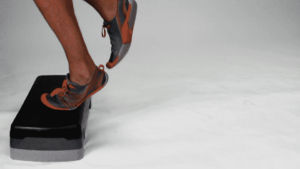Pacey Performance Podcast Review – Episode 436
Episode 436 – Jonas Dodoo – How to use the warm up as a movement screen and revolutionising technique analysis with computer vision and AI
Jonas Dodoo
Background
This week on the Pacey Performance Podcast, Rob is speaking to speed coach legend and Head Coach at Speedworks, Jonas Dodoo. Jonas has been on the podcast multiple times and each time he appears, its obvious why. Jonas is here to talk about the Speedworks philosophy of projection, reactivity and switching but also the warm up as a movement screen and sprint technology.
🔉 Listen to the full episode with Jonas here
Discussion topics:
”Can you give us an overview of Projection, Switching and Reactivity?”
Projection
- It’s about range of motion between thighs at toe off when you have finished pushing off the ground to separate your thighs and push back into the ground to throw your momentum forward
- Trunk discipline – the ability to have a big hip extension without having to overuse your back erectors
- “Bum before back” – using your butt.
- It’s about displacement, it’s linked to your strength to weight ratio and about separation of thighs and using your bum
- Once you project and make a big shape to throw yourself forward you need to exchange your limbs and reverse the action that you’ve just done. Hip extension –> Hip flexion (if your extension is driven by your bum, not your lumbar or quad/ knee)
- Not knee extension–> knee flexion, which would happen if you don’t have good co-contraction of the posterior chain.
Drive a good projection pattern that is bum driven which makes it really easy to switch and reverse your thighs really easily and cleanly.
If you are knee driven you are doing lots of shin roll and ankle collapse in order to find more tension on the ground. So your hip flexors become really quiet and therefore they are not ready when you start to run faster.
Switching
- Switching is really about the coordination of the pelvis so that you can hit a hip lock and bounce out of that position.
Reactivity
- Reactivity is like the suspension it’s like the recycling part of this action and it is highly linked to your efficiency.
You could have a really good projection and switch, but when your foot hits the ground you collapse, you lose all your energy and now have to shin roll and knee push; you still get stuck in that scenario of not being efficient, not being elastic.
Projection, Switching and Reactivity are my key attractors that when they work together you become very efficient in what you’re doing.
Most of the movement puzzles that are related to injury are around the fact that one or two of those things are an athlete’s strength and the third one is a weakness.
They may not be getting an injury in the calf and ankle. But they will get them in their groin and hamstring and that comes from the fact that they can’t be stiff and stable on the ground and the cascade of issues that come from it.
Projection– I’d measure hip displacement. How far have you traveled? Step length
Switching– is about reversal of thighs. I’d measure thigh angular acceleration and thigh angular velocity. Velocity being the range and in what time, and Acceleration being the ability to reverse it at the end of those ranges.
Reactivity – is all about all about GCT and ankle stiffness and all round body system stiffness. It’s highly related to Switching. We have plenty of players who have the highest RSI in the gym but when they run they have the worst reactivity and they spend lots of time on the ground because the foot isn’t moving back and down, maybe its just down or maybe its even out in front and it’s blocking.
Over the last 3 years we have studied runs, we’ve got over 1000 runs, 300-400 players. We do a deep analysis and it always comes back to being able to do one of those three things (PSR).
‘‘Can you give give us a bit of an insight into where your head goes in terms of implementing something to improve each one of those three (projection, switching and reactivity)?”
”I think it’s actually relatively simple. Can you make a big shape? So when you watch someone run right now, and you do need a bit of a coaching eye, or an awareness at least, of your population. So if you know your population and you have a normal distribution, a few of your guys will run with more step length, so bigger strides, almost bounding. Some of your guys will run with more step frequency, just spinning the wheels. Some of your guys frequency will come from limiting air time, not wasting any time on the ground, and that’s why they don’t have as much displacement. (Or) They might be on the ground an average amount of time, just like some of the other guys, it’s just they don’t spend any time in the air, and that’s why they spin fast. Others may spin fast because they are very quick off the ground. These guys are being more efficient through the floor, being more reactive, maybe limiting their range on the ground as well.
So if you watch your player and they have got big steps, but because they take big steps maybe they don’t reverse very quickly out of those steps; maybe they really utilise all of that time to extend. Those are the individuals that could benefit from as soon as they get to the end (of hip extension), switching a bit sooner, because just by adding a bit of switching and reversal they can attack the ground a bit sooner. They ‘may’ lose a tiny bit of length, but what they gain in rate of force development (RFD), in quickness on the ground, is what improves them and allows them to run a bit faster.
Being step length dominant or developing step length as a goal is good and is part of the equation of velocity (distance x time), however if you reduce your step length a tiny bit and increase the frequency, especially the reversal and the ankle stiffness you become efficient, let’s forget faster, you just become more efficient. You can run longer for the same amount of energy, you can repeat sprint, as you transition the later part of a run is less costly.
Projection
Making a big shape and pushing against resistance, creating good ankle and shin discipline are the KPIs of projection. So a broad jump encourages you to push against the ground horizontally, make a big extension (not a big shape) but a big extension against the ground to get a big projection. A single leg broad jump, or a bound, where time is not your KPI but distance is, will support projection.
At a general level so would building a bigger bum, a bit of hypertrophy around your proximal hamstring, even a squat, and stronger quadriceps. Most of your compound lifts will address your ability to project yourself. Most compound lifts are vertical, they are slow compared to running, so the transfer is limited but if you are weak and do a bit of compound lifting and get stronger your RFD improves automatically and your force capability (your strength to weight ratio) improves so 50% of what you need to project yourself well in a sprint is covered by just getting a bit stronger.
Now, getting a bit stronger after that doesn’t cover much more, so after that point and you have some strength (I would do it concurrently) I would be developing some strength and physical capabilities to use your hip extensors aggressively and stabilise that with your hip flexors and trunk. Then I would do various transference drills – special strength – be it sled, be it wall drills with a specific focus, some key switching elements where projection is limiting you, or you are stressing projection even though you are switching. Resistance during some of those key exercises, resisting hips in extension, or challenging your trunk while you are still trying to extend are all the key exercises that would really support projection. But at the end of the day, you need to do it running!
So at football clubs (and team sports) we do spend time helping them design micro doses of how to address projection, switching and reactivity through exercises in warm-ups, in the gym, post training on the grass, mid way through technical drills so that they potentiate the technical and tactical aspects. There are various ways of doing it but at the end of the day it is ‘can you push yourself forwards fast?’, that’s really what we are talking about. That’s just projection!
Switching
Maybe I’ll quickly talk about switching. So it’s about lumbar pelvic control so anything that is core related, anything where you have to be in a split stance and exchange your limbs out of a split stance or be in a split stance and have to be stable and strong and create lots of force closure around your pelvis. Anything that encourages you to dissociate your pelvis from your trunk, from your leg, being able to rotate, being able to flex/extend, but keep everything in control. Use your obliques like an elastic sling, use your hip flexors like a sling; anything that encourages that is going to support your ability to switch, or at least support the stability required in order for you to switch.
Anything that is high RFD at outer ranges of your limb, and having to eccentrically control (some people say it is isometrically- I’m not in that debate!) being able to block your knee on the way up and stop it moving up quickly, using your adductor magnus and your glute, and reverse it back down, that is switching. Or extending your hip, and before it’s finished its extension, initiate your hip flexors to rip it forwards, there are some high eccentric forces happening proximal to the joint, at both of those joint positions, and both of those things support your ability to switch. I do think that you need the physical strength, the core strength but that is almost slow strength and you need to be able to do it at high intensities and add some pertubations, and with those pertubations, still be able to switch your limbs!
Reactivity
I think that all plyometrics can help support your ability to be reactive. I think calf training and calf loading is only done in most team sports when people are injured, and there is a massive under appreciation of how a sloppy, soft, unstable ankle can create a cascade of issues up the chain.
Switching activities will also help, because when you are switching and landing on the ground, they actually get your contacts needed to create the RFD and the stiffness at the ankle, alongside running drills, along side plyometrics. They are all going to be great ways of adding system stiffness.”
‘‘When we talk about using the warm up as a movement screen, from a tech free perspective, and just using your coaching eye, how can you help coaches to zone in on certain things that may help them moving forwards?”
”I’m just going to regurgitate and just repeat what I just said, if I’m honest. I definitely think that PSR is a easy way to bucket the KPIs of movement. So let’s say you’re just doing a general warm up. There is:
- walking activities
- mobility on the ground or over hurdles
- locomotive activities – be it drills, lateral shuffles
Trunk control
So already you are doing a range of drills, so having an awareness of your group and asking basic questions like firstly, ”do they have good trunk control?, does their trunk sway forwards and backwards, are they stuck in a bit of lordotic anterior tilt and it remains that way? Anterior tilt is important for extension but you should be able to get it and come out of it. Or does it stay there all the time and they have a curve in their back, and they look like they’ve got a bit of a pot belly but really it’s because they open their diaphragm and they can’t set it. Trunk control is a massive precursor to stability and fluid movement. Lack of trunk control has been linked to ACLs, and groins and hamstrings and everything right? So, the first thing I’m looking for is trunk control. Looking side on at something like A skips, I’m looking at their head and seeing if they can keep their head just in front of their hips, rather than just behind because that difference is pretty dramatic in terms of what they are doing with their pelvis, and driving hip extension.
So small things around trunk control and its influence on your hip extension quality would be my constant theme, so why put sticks above head and why spend time on the ground doing hip bridges and trunk related activities? It’s so that I can get some co-contractions. Before we sprint (especially my rehabers) I do an aggressive set of med ball throws (kneeling, above their head, sitting with their feet off the ground and having to rotate) because I just want to turn on their ability to aggressively co-contract and deal with rotation quickly and get out of it. I don’t think that anti-rotation is something that we coach, or that we should coach and people coach it a lot. I want to see them go into rotation and then get out of it. I want them to access the edges, and get out of the edges aggressively.
So if I’m watching a warm-up I’m using a range of activities to encourage their ability to stabilise their trunk, dissociate hip extension and hip rotation around it. If I see lots of sway backwards and forwards, it’s an issue.
Plyometrics
If I’m doing basic low level plyometrics such as pogos, I’m looking to see, ”are you falling or are you flying?” This is something I have been talking a lot more over the last 8 months just because I’ve been in a lot of Academies and I need to coach it but I didn’t want to waste too much time, and actually it’s the two key things I focus on.
If you are falling you never get your toes up, you never attack the ground, you always amortise and squash your body into the ground, you always over rotate to go forwards. If you are flying, you get your legs ready in the air, you jump before you land. Before you land you actually initiate extension so as a result, your knees don’t bend as much, and your ankles don’t collapse. You load your elastic structures to get off the ground and you get more air time. Every player who does this will say it feels easier, I feel more efficient, it doesn’t hurt my knees. So as I’m going through a warm-up I’m making sure they are being bouncy and creating pre-tension across all of their plyos, their side skips, backwards runs etc to make sure they are flying and not falling.
Switching
Then switch, everyone does boom booms or A skips, or whatever exercise it is, but not everyone switches out of their marches, so that’s the first thing. I want to make sure that you don’t just make a big shape and then your foot falls. I want to make sure that you make a big shape and you can reflexively exchange your legs. When people do boom booms, sometimes they have big range, and let’s say they’re doing three booms, and they are going ”boom, boom, boom.”
But what you often see is, small, small, BIG! They sacrifice range of motion for speed, and all you are doing is staying in gear 2 and not really doing anything with it. The aim of projection is about range, so can you project and spend little time doing it.
Mathematicians will have taught us that in order to get faster you can’t increase step length and step frequency, is the general adage. I think it is BS, because if you attack the ground and have stiffness and pre-tension it allows to be quicker off the ground but it also allows you to get good projection, especially if you have enough air time. You can improve both! It’s just about how you go about it, and the discipline that is needed for it.
This isn’t just in linear sprinting, if you were doing a change of direction drill, the same things would apply. So what we do, is we go PSR for sprinting. Now let’s talk about it in terms of a change of direction or a cut or just slamming on the brakes. And Hailu Theodros has been great at taking those concepts and saying okay, how am I going to apply this to change of direction, but more importantly with his clients in the English Premier League (EPL), how do I make this position specific, so I can continue to layer in good movements and get it to transfer very, very quickly as well?”
Top 5 Take Away Points:
- Projection – It’s about range of motion between thighs at toe off when you have finished pushing off the ground to separate your thighs and push back into the ground to throw your momentum forward
- Switching – is really about the coordination of the pelvis so that you can hit a hip lock and bounce out of that position
- Reactivity – is like the suspension it’s like the recycling part of this action and it is highly linked to your efficiency
- Step length and step frequency can both be trained!
- PSR don’t just apply to linear sprinting. They apply to all movement/
Want more info on the stuff we have spoken about?
You may also like from PPP:
Episode 444 Jermaine McCubbine
Episode 442 Damian, Mark & Ted
Episode 381 Alastair McBurnie & Tom Dos’Santos
Episode 380 Alastair McBurnie & Tom Dos’Santos
Episode 372 Jeremy Sheppard & Dana Agar Newman
Episode 217, 51 Derek Evely
Episode 207, 3 Mike Young
Episode 192 Sprint Masterclass
Episode 87 Dan Pfaff
Episode 55 Jonas Dodoo
Episode 15 Carl Valle
Hope you have found this article useful.
Remember:
- If you’re not subscribed yet, click here to get free email updates, so we can stay in touch.
- Share this post using the buttons on the top and bottom of the post. As one of this blog’s first readers, I’m not just hoping you’ll tell your friends about it. I’m counting on it.
- Leave a comment, telling me where you’re struggling and how I can help
Since you’re here…
…we have a small favor to ask. APA aim to bring you compelling content from the world of sports science and coaching. We are devoted to making athletes fitter, faster and stronger so they can excel in sport. Please take a moment to share the articles on social media, engage the authors with questions and comments below, and link to articles when appropriate if you have a blog or participate on forums of related topics. — APA TEAM








